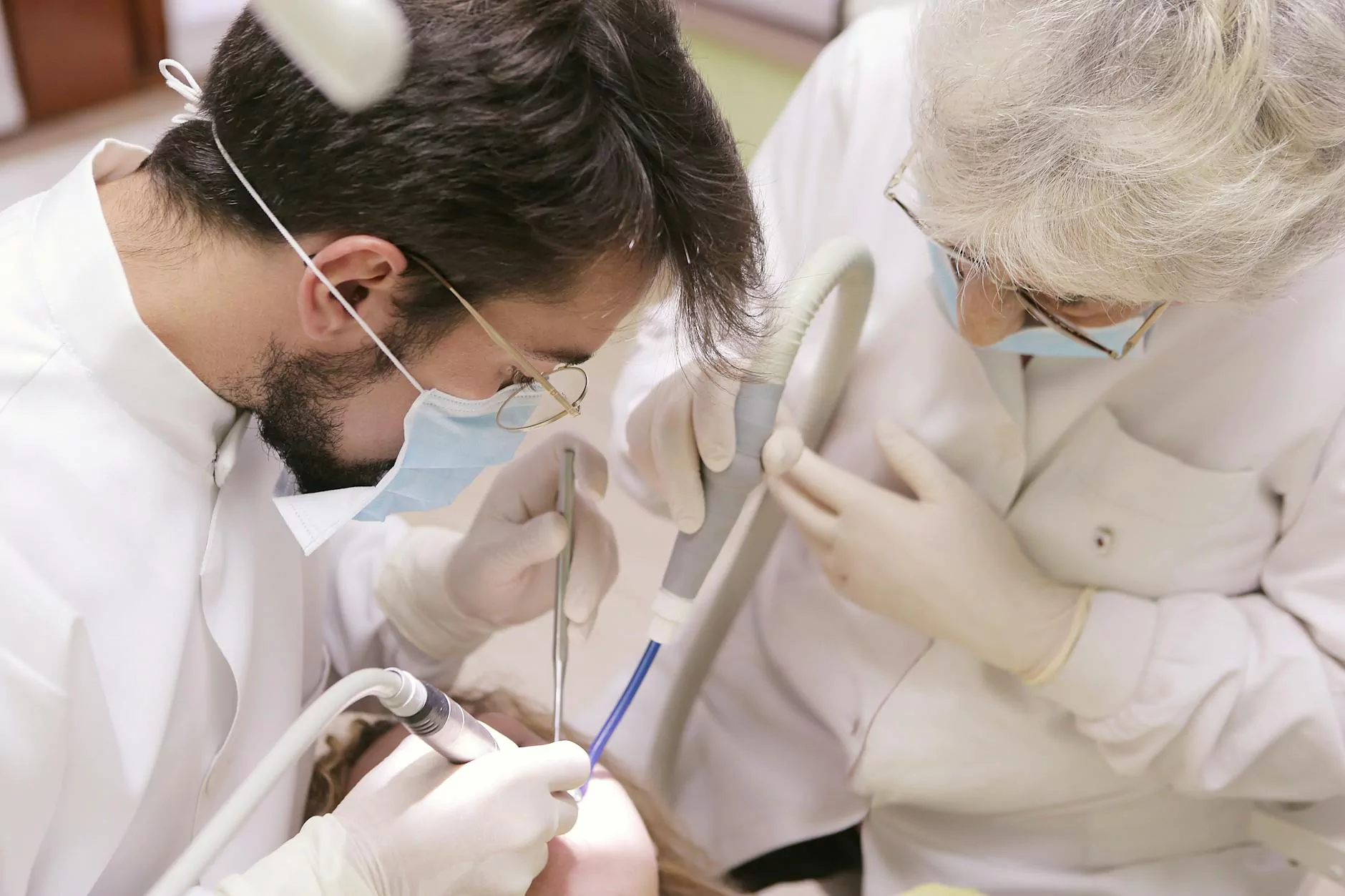Comprehensive Guide to External Rotation of the Shoulder: Unlocking Shoulder Mobility and Health

The external rotation of the shoulder is a fundamental movement pattern that plays a crucial role in maintaining shoulder health, optimizing athletic performance, and enabling daily functional activities. Whether you're an athlete aiming for peak performance, a patient recovering from shoulder injury, or simply interested in understanding how your shoulder works, mastering knowledge about shoulder external rotation is essential. This comprehensive guide explores in-depth the anatomy, biomechanics, common issues, rehabilitation techniques, and professional strategies related to external rotation of the shoulder.
Understanding the Anatomy of the Shoulder Relevant to External Rotation
The shoulder is one of the most mobile joints in the human body, consisting of a complex assembly of bones, muscles, tendons, and ligaments. Specifically, the external rotation of the shoulder involves a coordinated effort among several key structures:
- Glenohumeral joint: The ball-and-socket joint where the humeral head (ball) articulates with the glenoid cavity of the scapula.
- Rotator cuff muscles: A group of four muscles—supraspinatus, infraspinatus, teres minor, and subscapularis—that stabilize the shoulder and facilitate rotational movements.
- Deltoid muscle: Assists in shoulder movements, especially when stabilizing during external rotation.
- Scapular muscles: Such as the trapezius, serratus anterior, and levator scapulae, which position the scapula to optimize shoulder function.
For effective external rotation of the shoulder, these components must work synergistically, allowing for smooth, controlled, and pain-free movement.
The Mechanics and Biomechanics of External Rotation of the Shoulder
The external rotation of the shoulder involves rotating the humerus outward, away from the midline of the body. During this movement, the infraspinatus and teres minor muscles contract to turn the arm externally. The range of motion can be influenced by several factors including joint capsule flexibility, muscle strength, and overall shoulder stability.
In clinical terms, the normal range of external rotation of the shoulder is approximately 70 to 90 degrees when the arm is abducted to 90 degrees. When the arm is adducted, the range often decreases but remains vital for activities like throwing, swimming, and other overhead motions.
Common Conditions and Injuries Related to External Rotation of the Shoulder
When the external rotation of the shoulder is compromised, it can lead to several musculoskeletal problems, including:
- Rotator cuff tears: Damage to the infraspinatus or teres minor muscles may impair external rotation, causing pain and weakness.
- Impingement syndrome: Restricted external rotation can lead to impingement of shoulder tendons, resulting in pain and inflammation.
- Adhesive capsulitis (frozen shoulder): Limited range of motion in external rotation is characteristic of the frozen shoulder condition.
- Imbalance of shoulder musculature: Overuse of internal rotators without balanced external rotation can cause instability and injury.
Early diagnosis and appropriate management are critical to prevent chronic issues and facilitate effective recovery.
The Role of External Rotation in Shoulder Rehab and Injury Prevention
Depending on the nature of the injury or condition, emphasis is placed on restoring external rotation of the shoulder during rehabilitation programs. Proper rehabilitation aims to:
- Restore Range of Motion: Gentle stretching to improve flexibility of joint capsule and muscles.
- Build Strength: Targeted exercises to strengthen infraspinatus and teres minor, ensuring stability.
- Enhance Proprioception: Improving the brain-muscle connection for better movement control.
- Prevent Re-injury: Establishing balanced muscular strength around the shoulder to avoid overcompensation.
Incorporating functional exercises that simulate real-life activities and sports movements ensures a comprehensive rehabilitation approach.
Expert Strategies for Enhancing External Rotation of the Shoulder
To maximize external rotation of the shoulder and overall shoulder health, consider these evidence-based approaches:
1. Dynamic Stretching and Mobilization Techniques
Dynamic stretching exercises, such as pendulum swings, cross-body arm pulls, and shoulder rolls, help loosen tight muscles and improve joint mobility. Mobilization techniques performed by trained therapists can also increase the capsule's flexibility and range of motion.
2. Strengthening External Rotators
Targeted strengthening exercises are vital once pain subsides. Typical exercises include:
- External rotation with resistance bands: Using resistance bands anchored to stabilize the shoulder during rotation.
- Side-lying external rotation: Lying on your side and rotating the arm upward, focusing on controlled movement.
- Isometric external rotation: Pushing against fixed resistance without actual movement to build initial strength.
3. Stabilization and Proprioception Drills
Stability exercises, such as plank variations and shoulder blade squeeze, help maintain proper scapular positioning, crucial for optimal external rotation function.
4. Regular Monitoring and Gradual Progression
Working with physical therapists or healthcare professionals ensures exercises are properly executed, progressively increasing intensity based on recovery milestones.
The Importance of Professional Consultation and Personalized Treatment
While self-management is beneficial, consulting with qualified health providers such as chiropractors, sports medicine specialists, or physiotherapists is essential for individualized treatment plans. Professionals can assess your specific needs, identify underlying issues, and craft targeted interventions to restore optimal external rotation of the shoulder.
Innovative Approaches and Emerging Treatments in Shoulder Mobility Enhancement
Recent advances in treatment options include:
- Regenerative medicine: Platelet-rich plasma (PRP) therapy and stem cell treatments to accelerate healing of damaged tissues.
- Biomechanical analysis: Utilizing motion capture and 3D imaging to develop precise rehabilitation protocols tailored to individual movement patterns.
- Advanced modalities: Ultrasound therapy, laser treatments, and shockwave therapy to reduce inflammation and promote tissue repair.
Maintaining Long-term Shoulder Health
Achieving and sustaining excellent external rotation of the shoulder requires ongoing care. Incorporate regular stretching, strengthening, and ergonomic adjustments into your daily routine. Pay attention to warning signs like persistent pain or restricted movement, seeking prompt professional advice to prevent chronic issues.
The Role of Education and Awareness in Shoulder Health
Educational initiatives led by institutions like iaom-us.com are vital in spreading awareness about shoulder anatomy, biomechanics, and injury prevention. Knowledge empowers individuals to adopt proper techniques in sports, workplace ergonomics, and daily activities, reducing the risk of injury and enhancing overall quality of life.
Conclusion: Unlocking the Power of Proper External Rotation of the Shoulder
The external rotation of the shoulder is more than just a movement — it is a cornerstone of shoulder health, functionality, and athletic prowess. Recognizing its importance, understanding the anatomy and biomechanics, and engaging in effective rehab and preventive strategies are crucial steps toward maintaining optimal shoulder mobility. Whether recovering from injury or striving for peak performance, adopting best practices for external rotation ensures a healthier, more resilient shoulder that can support your physical endeavors for years to come.
At iaom-us.com, we are committed to providing the latest educational resources, expert guidance, and innovative treatments in Health & Medical and Chiropractors sectors. Empower yourself with knowledge and take proactive steps to optimize your shoulder health today.









